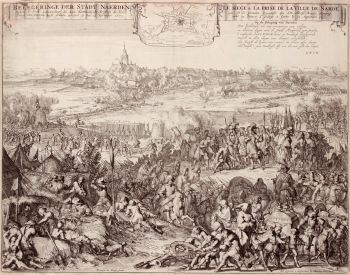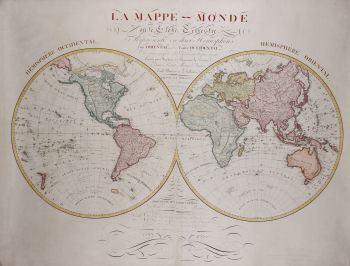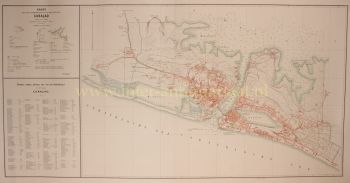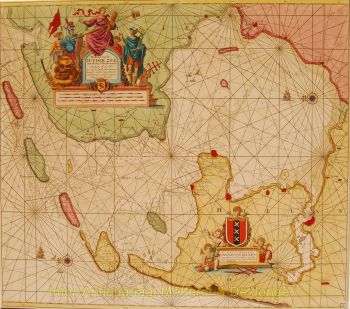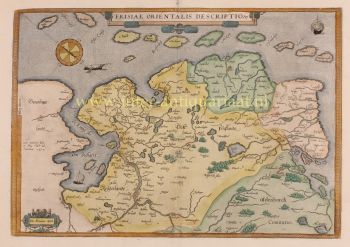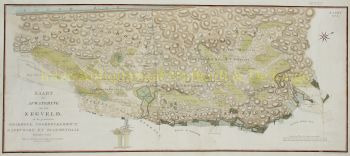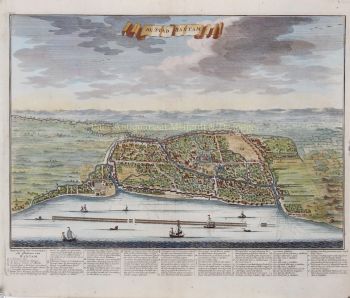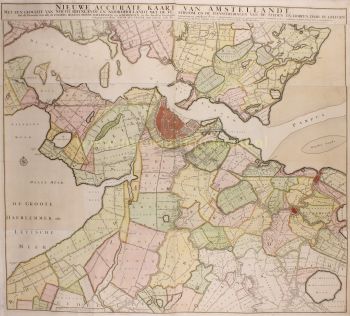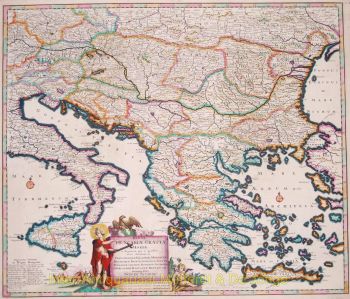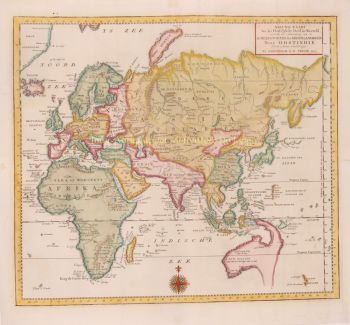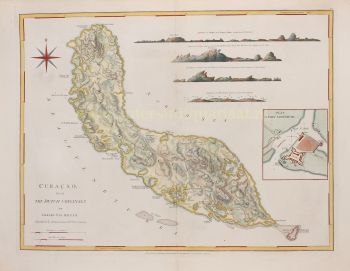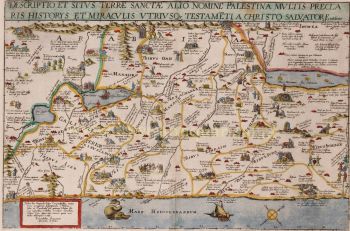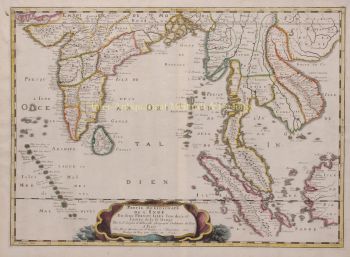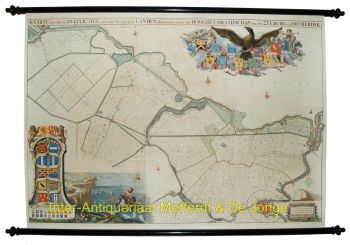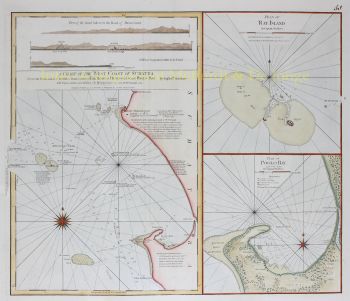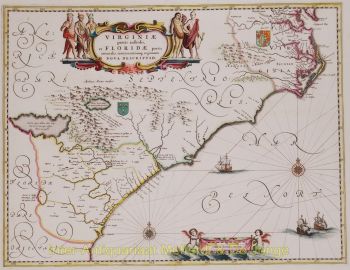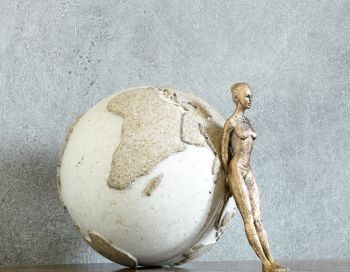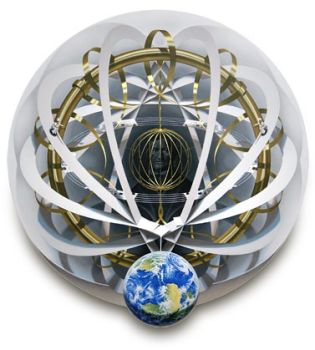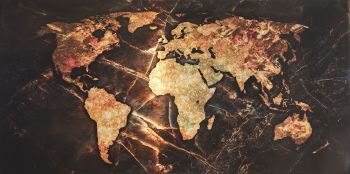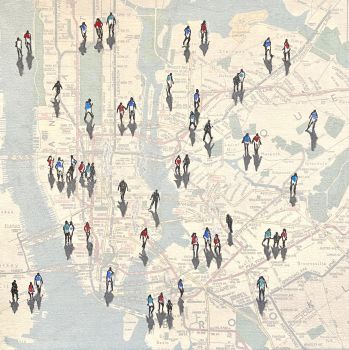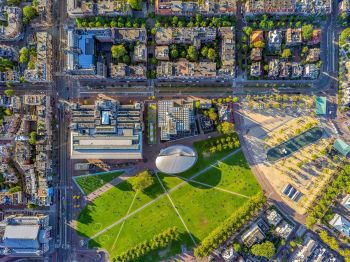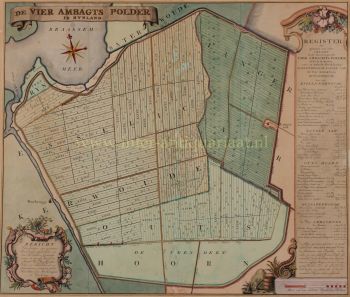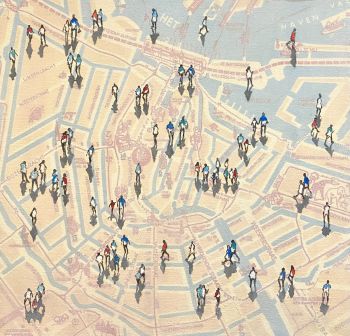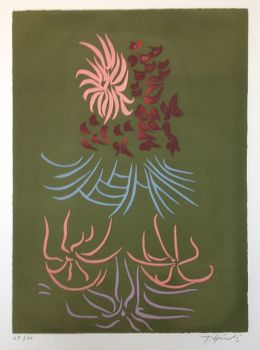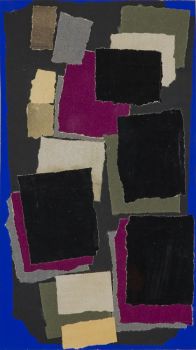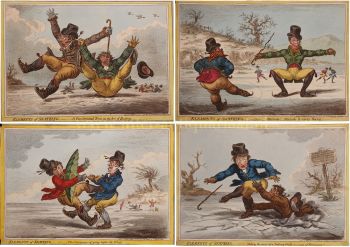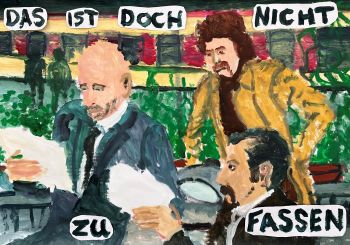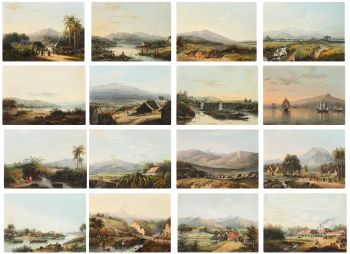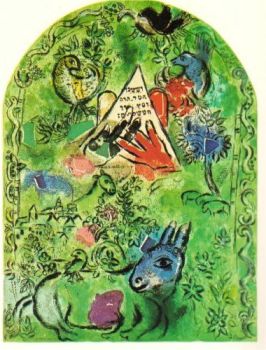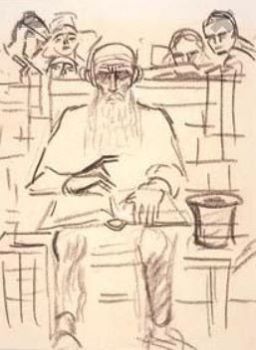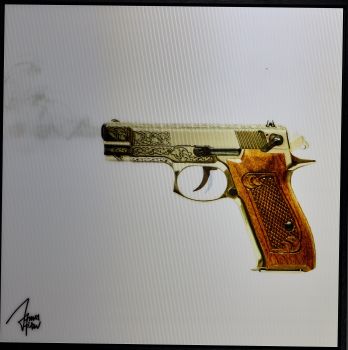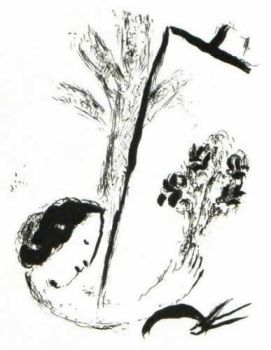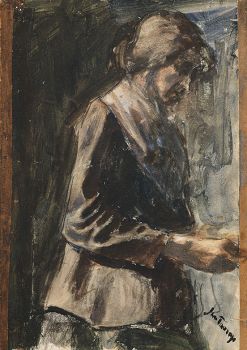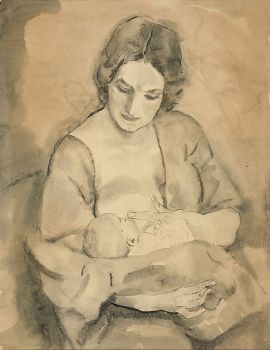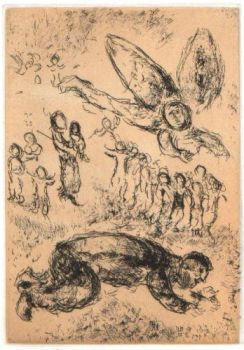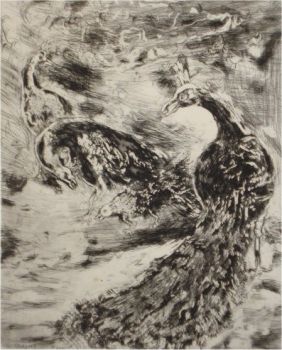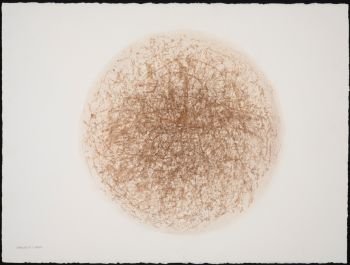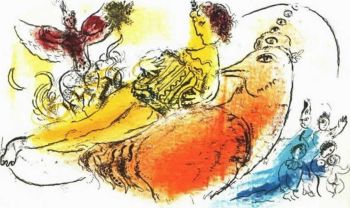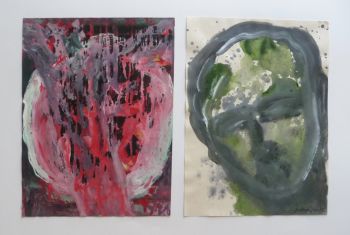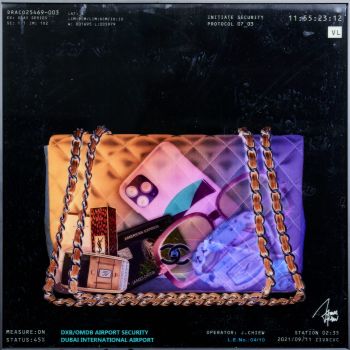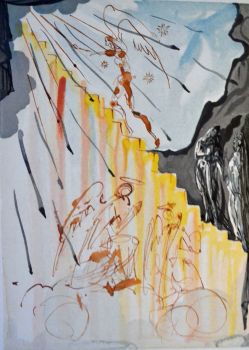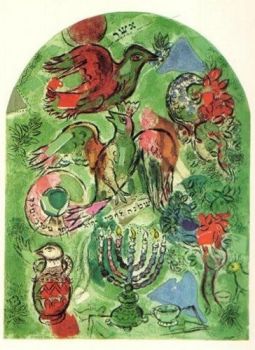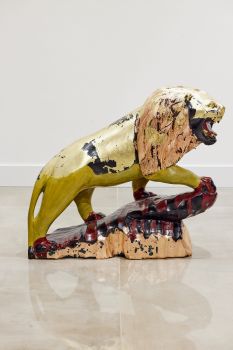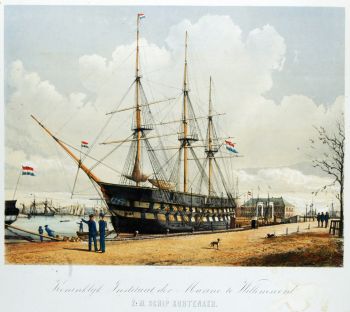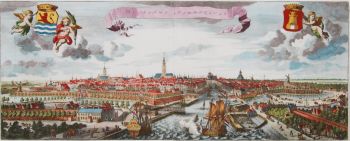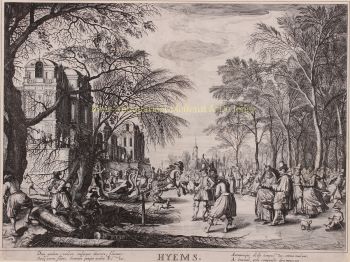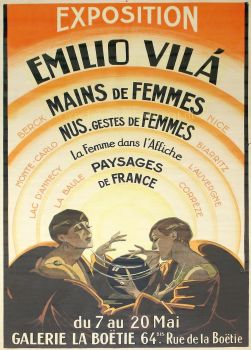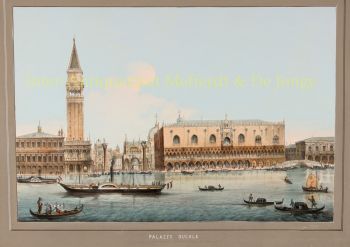mappa del mondo 1700
Romeijn de Hooghe
Inter-Antiquariaat Mefferdt & De Jonge
- A proposito di opere d'arteNovissima & exactissima totius orbis Terrarum Tabula Hand coloured copper engraving from the "Atlas Maritimus Ofte Zee Atlas"?. Published in Nuremberg by David Funcke c. 1700. Size: 48 x 55 cm. David Funcke was a Nuremberg publisher, who commissioned works from Johann Baptiste Homann. This attractive and ingenious map however, derives from a work by Romeyn de Hooghe "one of the most accomplished Dutch artists of the second half of the 17th century" that appeared in Frederick de Wit's Atlas. The marginal decoration in this work depicting the four elements of Classical philosophy portrays Fire as a military battle; Air as the heavens ruled by the Zodiac and serenaded by Apollo; Earth as a field being harvested and husbandry; and Water, a sea with Dutch ships and a sputing whale. There are Greek gods presiding from the sidelines of all these scenes: Zeus, Hera, Hades, Persephone, Demeter and Poseidon. The map has two large hemispheres and two smaller, polar hemispheres. There is an outline of an Antarctic continent, which De Wit had left blank. Reference: Shirley 616 (and 444), plate 327. Price: Euro 7.500,- (incl. frame)
- A proposito di opere artista
Romeyn de Hooghe (1645, Amsterdam – 1708, Haarlem) è stato un incisore, disegnatore di stampe, pittore, scultore, orafo, medaglia, avvocato, editore di mappe e autore di scritti storici. Nel 1673 Romeyn sposò Maria Lansman, figlia di un ministro. Vivevano ad Amsterdam sul Reguliersgracht. Ha illustrato libri, ad esempio Hieroglyphica of Merkbeelden der oude volkeren (1735), un noto libro di emblemi e fonte per la mitologia classica e la sua iconografia. Ha anche illustrato libri di Constantijn Huygens e Hugo de Groot. Nel 1675 possedeva un negozio d'arte nella Kalverstraat. Nel 1677 illustrò il viaggio di Coenraad van Klenck a Mosca. Ha prodotto molte acqueforti, tra gli altri i fuochi d'artificio sull'Hofvijver all'Aia. Alcune acqueforti di De Hooghe furono disapprovate da alcune persone, poiché avrebbero mostrato soggetti vergognosi. D'altra parte era stimato come un grande autore di satira grafica. De Hooghe era un propagandista della politica antifrancese. Dipinse grandi pannelli per le stanze dell'ufficio del sindaco di Enkhuizen. Nel 1690 si trasferì ad Haarlem, dove iniziò lezioni di disegno per bambini sul Nieuwe Gracht 13.
Sei interessato ad acquistare questa opera d'arte?
Artwork details
Related artworks
- 1 - 3 / 3
- 1 - 4 / 24
Eduard Charlemont
‘Allegories of Africa and America’1872
Prezzo su richiestaZebregs & Röell - Fine Art - Antiques
Eduard Charlemont
‘Allegories of Africa and America’1872
Prezzo su richiestaZebregs & Röell - Fine Art - Antiques
Artista Sconosciuto
A large wall map of Asia by Nicolas de Fer 1647 - 1720
Prezzo su richiestaZebregs & Röell - Fine Art - Antiques
1 - 4 / 15Abraham Salm
Twenty-four chromolithographs of Java after A. Salm”1801 - 1876
Prezzo su richiestaZebregs & Röell - Fine Art - Antiques
1 - 4 / 24- 1 - 4 / 12




